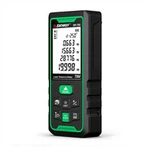Why can’t the current or voltage be adjusted when using a DC regulated power supply?
Phenomenon 1: There is either current but no voltage or voltage but no current at the output. Notwithstanding the aforementioned circumstances, the power supply is operating as usual. It is the operator's responsibility to verify that the load is in excellent condition, has good contact, and is either short- or open-circuited. Respect the guidelines and so forth. In severe situations, the natural output current will be 0 if the load line is severed and the power supply has voltage output (constant voltage condition). Likewise, in the event that the load is shorted out and the power source has a current output (constant current condition), the natural output voltage will be 0.
Phenomenon 2:It is discovered that the no-load voltage cannot be changed when the voltage is changed. Some operators prefer to fully turn the "current adjustment" potentiometer to the left, making it impossible to alter the power supply's no-load voltage. This indicates a serious lack of awareness regarding "current regulation" on his part. Naturally, the no-load voltage will not increase if you turn off the "current adjustment" to zero and do not release even a tiny amount of current because the power supply consumes some current even when it is not in use.Thus, in general, the "current adjustment" shouldn't be set to zero; instead, it should be turned to the right by about a quarter turn to prevent the aforementioned scenario. Method of general operation: The current adjustment knob should be turned clockwise to the bottom and held in place when the device is acting as a voltage regulator to output voltage. To control the DC voltage value output, turn the voltage adjustment knob. Turn the voltage adjustment knob clockwise to the end and hold it to output current while the device is functioning as a steady current source. To control the output DC current value, turn the current adjustment knob.
Phenomenon 3: The power source can produce both voltage and current, but it is not possible to modify the voltage. Alternately, the power source can output both voltage and current. It is not possible to raise the current even if you would like to. This is a result of the operator's unclear understanding of what "constant voltage" and "constant current" mean. The power supply is operating in a constant voltage state if the "constant voltage" light is on (voltage can be thought of as taking the initiative).Turning the "current adjustment" knob to the right at this point will not cause the current to increase since the output current at this point is decided by the load and not by the operator (it may be claimed that the current accounts for Passive status). However, at this point, increasing the "voltage adjustment" knob to the right will result in an increase in both the output voltage and output current. (Current is the slave, voltage is the master.)Similarly, the power supply is operating in a constant current state if the "constant current" light is illuminated. At this point, the load determines the output voltage rather than it being "adjusted". The output voltage and current can only be changed in tandem by using the "current adjustment" knob. In other words, the master-slave relationship needs to be made clear. In this case, the voltage is the slave and the current is the master. The voltage and current on the load can only be changed by modifying the current while the power supply is in the "constant current" state and the voltage when it is in the "constant voltage" state.






